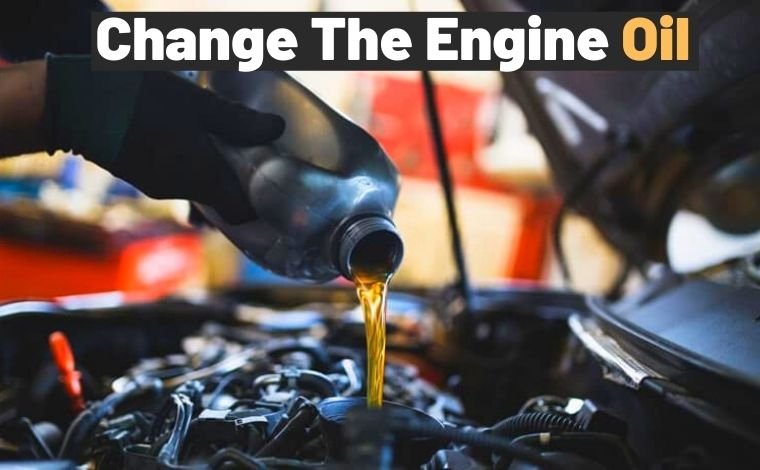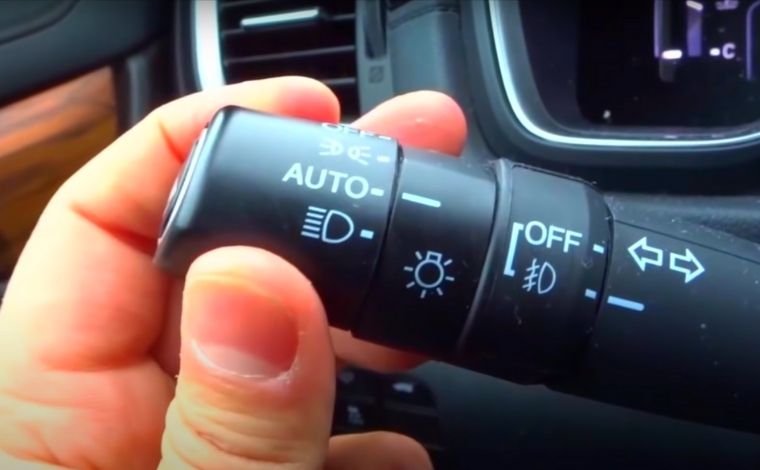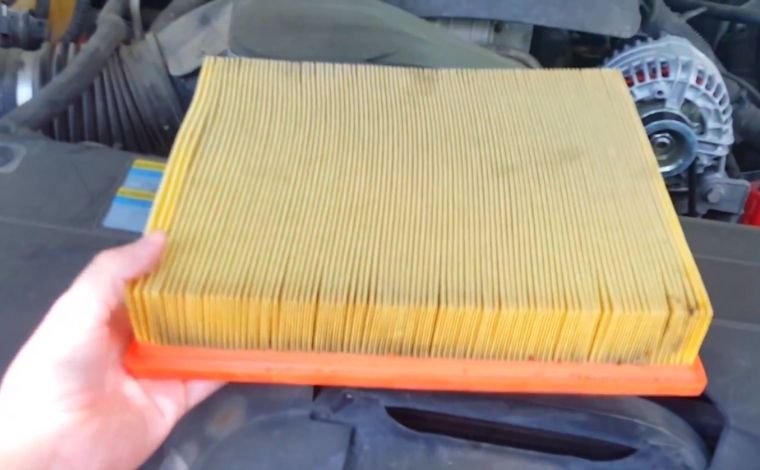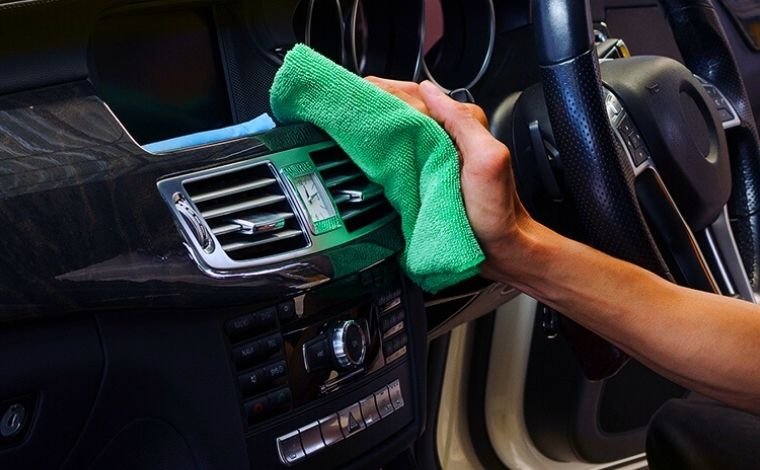Last Updated on April 9, 2025
Have you ever thought about how essential car maintenance is? It’s one of the most vital responsibilities after purchasing a vehicle. Regular maintenance not only ensures optimal performance but also significantly extends your car’s lifespan. Imagine if you neglected basic upkeep—your vehicle could suffer irreversible damage, become unreliable, and even end up unusable.
The smartest approach is to address every minor issue as soon as it arises. Doing so helps prevent major repairs down the line and saves you money in the long run. Understanding basic car maintenance tips can save you thousands in long-term repair costs.
Modern cars are built with complex systems, many of which go unnoticed by the average driver. From the engine to the braking system and beyond, there are countless components working together. So, it’s no surprise that regular maintenance is non-negotiable.
Some car owners may feel overwhelmed by the thought of maintaining their vehicle. But the truth is, by learning a few simple techniques and getting familiar with basic maintenance tasks, anyone can become confident in caring for their car. Not only will your vehicle thank you, but you’ll likely begin to enjoy the process too.
✅ 21 Essential Car Maintenance Tips to Make Your Vehicle Last Longer
There are plenty of ways to properly care for your car. These car maintenance tips are easy to follow and can significantly improve your vehicle’s lifespan. By following these practical tips, you’ll enjoy a safer, smoother, and more reliable driving experience for many years to come.
🚗 Tip #1: Be Careful During the Break-In Period
The break-in period is one of the most critical times in your vehicle’s life. This phase usually covers the first 1,000 miles (or 1,600 kilometers) after purchase. How you treat your car during this time can directly affect its long-term durability and performance.
Here are key break-in guidelines to follow:
- Keep the speed under 55 mph (88 kph) during the break-in period. Check your owner’s manual for specific speed recommendations, as it can vary by make and model.
- Avoid rapid acceleration and keep RPMs below 3,000, especially during the first few driving hours. Gradual acceleration reduces stress on the engine.
- Avoid carrying heavy loads during this period. Give your car time to adjust before hauling passengers or cargo regularly.
- Monitor engine oil pressure and level closely. Proper lubrication is critical in this phase to reduce friction and prevent internal damage.
🚗 Tip #2: Park Your Car in a Shaded Area
Where you park your car matters more than you think. Parking under a shade or in a garage can help protect your vehicle from various environmental threats:
- Bird droppings, tree sap, and rain can stain or corrode the paint over time.
- Prolonged sun exposure can fade your car’s paint and damage the interior.
- Storms or falling branches can dent or scratch your vehicle.
If a garage is not available, look for shaded areas or consider using a car cover. It’s a simple habit that preserves your car’s exterior, keeps it cooler in summer, and adds to its overall longevity.
🚗 Tip #3: Change the Engine Oil Regularly
Engine oil is the lifeblood of your vehicle—whether it’s a car, microbus, or motorbike. It lubricates moving parts, reduces friction, and keeps the engine cool. But over time, engine oil degrades and loses its effectiveness, making regular oil changes essential for long-term performance and engine protection.
Here’s a quick overview:
| Features | Car | Microbus | Motorbike |
|---|---|---|---|
| Change Engine Oil | Every 15,000 km | Every 8,000 km | Every 3,000 km |
| Ideal Mileage | 14.22 KMPL | 12 KMPL | 50 KMPL |
| Recommended Fuel | Octane/Gasoline | Diesel | Petrol |
Why is engine oil so important?
Here’s a simple example to understand it better:
Rub your dry hands together—you’ll feel heat due to friction. Now, apply some oil to your palms and rub again. Notice the difference? Much less heat. That’s exactly what engine oil does inside your vehicle: it reduces heat and friction, keeping your engine smooth and cool.
Over time, used oil becomes contaminated and can no longer protect engine components. For most vehicles, it’s safe to change the oil every 3,000 miles (or every 3 months). However, newer cars may only require oil changes every 6,000 miles (or 6 months) depending on driving habits and oil quality.
⏳ Pro Tip: Always follow your vehicle manufacturer’s recommendations in the owner’s manual for accurate intervals.
🚗 Tip #4: Clean the Engine Exterior
The engine is the heart of your vehicle—and just like any other machine, it needs care inside and out. While engine oil keeps internal components lubricated, a clean engine exterior prevents dirt and grime from interfering with its performance.
Debris, dust, and grease can accumulate on the engine surface over time, which can trap heat and make inspections harder. By regularly cleaning the outer engine, you not only keep your car looking neat but also prevent corrosion and spot leaks early.
🧽 Cleaning Tip: Use a soft brush and degreaser, and avoid spraying water directly on electrical parts. Focus on gentle cleaning and dry thoroughly afterward.
🚗 Tip #5: Maintain the Braking System
Neglecting your braking system can put your safety at serious risk. Whether you’re in city traffic or on the highway, your brakes are crucial for control and accident prevention.
Here’s how the system works: When you press the brake pedal, the brake pads and rotors work together to slow down the wheels through friction. Over time, this friction wears down the components, especially the brake pads.
🔧 Maintenance Advice:
- Inspect your brake pads regularly and replace them when worn.
- Check your rotors for warping or uneven wear.
- Ensure the brake fluid is at the correct level and clean.
Squeaking, grinding, or delayed braking are signs you shouldn’t ignore. Routine brake checks can save you from dangerous situations and costly repairs.
🚗 Tip #6: Check and Maintain Your Tires Regularly
Imagine your car tire getting damaged during a long road trip—stressful, right? Tires are among the most critical components of your vehicle. They support the vehicle’s weight, provide traction, and ensure a smooth, safe ride.
Tires can get damaged due to:
- Driving on rough or uneven roads
- Hitting potholes or curbs
- Excessive wear over time
- Improper inflation levels
👉 Tire Pressure Maintenance:
Check your tire pressure weekly or at least twice a month using a reliable tire pressure gauge. Always maintain the recommended PSI (pounds per square inch) specified in your owner’s manual or the sticker inside the driver-side door. Driving with underinflated tires can cause uneven wear, reduce fuel efficiency, and increase the risk of a blowout.
🛞 Pro Tip: Don’t forget to inspect your spare tire regularly too!
💡 Tip #7: Test Your Headlights, Taillights, and Indicators
Your vehicle’s lighting system is crucial for safety—especially during nighttime driving or in low-visibility conditions like rain or fog.
Here’s what to check:
- Headlights – Ensure both high and low beams are functional.
- Taillights – Make sure they illuminate when braking.
- Turn signals/indicators – Crucial for signaling lane changes and turns to other drivers.
- Brake lights – Must be responsive to pedal pressure.
🔦 A faulty light can lead to miscommunication with other drivers, increasing the risk of accidents. For example, if you intend to turn right but your right turn signal isn’t working, the vehicle behind you won’t get the message—potentially causing a collision.
🛠️ Action Step: Test all lights once a week. Replace burnt-out bulbs and address electrical issues promptly.
⚠️ Tip #8: Don’t Overload Your Car
Every vehicle has a recommended load capacity, which can be found in the owner’s manual. Overloading your vehicle can:
- Damage the suspension
- Reduce fuel efficiency
- Put excess pressure on the tires
- Affect braking and steering response
For most passenger vehicles, 150–200 pounds of additional cargo is acceptable. Avoid exceeding this limit to maintain your car’s performance, safety, and longevity.
📉 Did You Know? Exceeding the weight limit regularly can shorten your vehicle’s lifespan and lead to costly repairs.
🧰 Tip #9: Always Keep Emergency Tools in the Car
You never know when your car might break down or run into trouble—especially on a remote road. Keeping essential automotive tools with you can help you handle minor issues without waiting for roadside assistance.
🧰 Must-Have Car Tools:
- Wrench set & socket set
- Jack and jack stands
- Tire inflator or sealant
- Jumper cables
- Electrical tape
- Flashlight
- Spare fuses & bulbs
- Extra fluids (engine oil, coolant, brake fluid)
Having these tools handy can help you perform basic repairs, stay safe, and avoid getting stranded in emergencies.
🧳 Tip #10: Choose Selective Loads to Avoid Roof Scratches
When carrying loads on your vehicle’s roof—whether it’s a car, SUV, or microbus—always take precautions to prevent surface damage. Avoid placing metal items directly on the roof, as they can cause scratches, paint damage, or even rust if they rub against the surface.
✅ Smart Alternative:
Instead of stacking sharp or heavy items on the roof, divide the load into smaller parts and place them under the seats or in the trunk. This hidden space is less prone to scratching and keeps your vehicle’s exterior clean and scratch-free.
🚫 Warning: Repeated scratches can compromise the paint and expose the metal surface, leading to corrosion and long-term damage.
🌬️ Tip #11: Replace the Vehicle’s Air Filter Annually
The air filter ensures clean airflow to your engine, preventing dust, dirt, and other pollutants from entering. Over time, it becomes clogged—especially if you drive in dusty areas—reducing engine efficiency and increasing fuel consumption.
🔁 Recommended Schedule: Replace the air filter at least once a year or every 12,000–15,000 miles, depending on usage and driving conditions.
🛑 What Happens If Ignored?
- Reduced engine performance
- Increased fuel consumption
- Unpleasant odors inside the cabin
- Potential damage to the air conditioning system (which can cost $1000–$4000 to replace)
💡 Tip: Check your owner’s manual for the specific filter type and replacement guidelines.
🔋 Tip #12: Check and Maintain Your Car Battery Regularly
The car battery is the powerhouse of your vehicle’s electrical system. It not only starts the engine but also powers your lights, infotainment, horn, air conditioning, and electronic control systems.
🔍 What to Check:
- Corrosion on terminals
- Loose or frayed cables
- Battery charge level
- Battery age (most last 3–5 years)
🌡️ Extreme temperatures (hot or cold) can drastically affect battery life and performance. If your car struggles to start or if electronics seem weak, it may be time for a battery check or replacement.
🧪 Pro Tip: Use a multimeter to test battery voltage. If it reads below 12.4V, consider charging or replacing it.
🔌 Tip #13: Inspect and Maintain the Spark Plugs
Spark plugs are essential for igniting the fuel-air mixture in the engine. When they wear out or get dirty, you may experience:
- Engine misfires
- Rough idling
- Poor acceleration
- Increased fuel usage
- Difficulty starting the car
🧼 Quick Fix:
Clean the spark plugs if they’re just slightly dirty. If they appear worn, corroded, or covered in carbon buildup, it’s best to replace them.
🔁 When to Replace: Every 30,000–100,000 miles, depending on the vehicle and spark plug type.
👨🔧 Fun Fact: Clean and well-maintained spark plugs contribute to smoother acceleration and better engine health.
🚿 Tip #14: Wash Your Car Regularly
Your car faces a lot daily—dust, mud, rain, bird droppings, tree sap, and grime from long drives. Especially after a rainy season or road trip, the car’s appearance can become shockingly messy. Driving a dirty vehicle not only feels uncomfortable but also gradually harms your car’s paint and finish.
🧽 Car Washing Routine:
- Use car-safe soap and clean water.
- Gently scrub the car’s body with a soft synthetic microfiber cloth to avoid scratches.
- Rinse with a hose or bucket of clean water.
- Dry thoroughly with a clean, soft towel to prevent water spots.
💡 Pro Tip: Wash your car once every 1–2 weeks to maintain its aesthetic and resale value.
⛽ Tip #15: Maintain Good Mileage
Fuel economy plays a crucial role in your car’s performance and your budget. If your vehicle starts consuming more fuel than usual, it’s often a sign of underlying issues.
🔍 Causes of Poor Mileage:
- Engine or transmission problems
- Dirty fuel injectors or air filters
- Low tire pressure
- Aggressive driving or constant high-speed pickup
🚘 What You Should Do:
- Visit a mechanic for a full diagnosis if fuel consumption rises.
- Avoid sudden acceleration and excessive pick-up.
- Drive smoothly at moderate speeds to maximize fuel efficiency.
💸 Better mileage helps reduce fuel costs and prolongs the engine’s life—a win for your wallet and your vehicle.
🧥 Tip #16: Cover Your Car When Not in Use
If your car is parked outside and left uncovered, it becomes exposed to dust, rain, sun rays, leaves, and bird droppings. Over time, these elements can damage the paintwork, glass, and trim.
✅ Benefits of Using a Car Cover:
- Protects from dust, UV rays, rain, and minor scratches
- Reduces the need for frequent cleaning
- Helps preserve your car’s finish and resale value
💡 Choosing the Right Car Cover:
- Ensure the inner lining is soft and scratch-proof
- Opt for water-resistant and UV-protected outer material
- Choose a cover that fits your vehicle snugly
🛑 Tip #17: Maintain the Anti-Lock Braking System (ABS)
Your vehicle’s Anti-Lock Braking System (ABS) is crucial for maintaining control during sudden stops. However, the ABS system is sensitive to moisture, which can degrade the brake fluid and damage the ABS pump over time.
🧪 Maintenance Tip:
- Flush and replace the brake fluid every 2–3 years
- Regularly inspect ABS sensors and lines for wear or corrosion
- Use high-quality brake fluid as recommended in your owner’s manual
🚨 Ignoring ABS maintenance can lead to reduced braking efficiency, longer stopping distances, and complete brake failure in critical moments.
❄️ Tip #18: Run the AC Occasionally During Winter
Many drivers completely stop using their vehicle’s air conditioner in the winter, but this can lead to long-term damage. If left unused for months, the AC components, including the compressor and seals, may deteriorate or seize up.
✅ Why You Should Use AC in Winter:
- Prevents compressor wear and tear
- Maintains seal lubrication
- Helps defog the windshield faster
💡 Pro Tip: Run the AC for at least 10–15 minutes every week during winter to keep the system in top shape and extend its lifespan.
🌡️ Tip #19: Use Coolant-Antifreeze Properly
Your car’s cooling system is vital in keeping the engine from overheating, especially in extreme temperatures. That’s where coolant-antifreeze comes into play. It ensures the engine stays at an optimal temperature and prevents it from freezing or overheating.
🧪 How to Maintain Coolant Levels:
- Check the coolant overflow reservoir regularly.
- If it’s low, top it up with a 50/50 mixture of antifreeze and distilled water, or use a pre-mixed coolant-antifreeze.
- Never open the radiator cap when the engine is hot—wait for it to cool down.
🔧 Pro Tip: Replace your coolant every 2 to 3 years (or as recommended in your owner’s manual) to prevent rust, corrosion, and engine damage.
🧼 Tip #20: Clean the Car Interior Regularly
A clean car interior not only feels great but also improves hygiene and preserves resale value. Areas like seats, dashboards, door handles, seatbelts, and cup holders gather dust, grime, and germs over time.
🧽 Interior Cleaning Checklist:
- Vacuum the seats, floors, and mats weekly.
- Use interior-safe cleaners for glass, plastics, and vinyl surfaces.
- Wipe down high-touch areas like the steering wheel, gear shift, and infotainment screen.
- Use seat covers or leather conditioner (if applicable) to maintain material quality.
💡 Bonus Tip: Add a car air freshener or cabin air filter replacement for a fresher atmosphere!
🛡️ Tip #21: Review Your Car Insurance Policy Annually
Even with the best maintenance, accidents and unexpected events can happen. A comprehensive car insurance policy is essential for financial protection in case of damage, theft, or collision.
🔍 What to Review in Your Insurance Policy:
- Coverage type (comprehensive, collision, liability)
- Deductibles and premium costs
- Whether it covers natural disasters or roadside assistance
- Renewal discounts or no-claim bonuses
🧾 Pro Tip: Reevaluate your policy every year or after major vehicle changes to ensure you have the best possible protection and pricing.
🚗 The Average Lifespan of a Car
On average, a well-maintained car can last between 12 to 15 years or approximately 200,000 miles. However, this lifespan depends largely on how you drive and maintain the vehicle. With routine servicing, timely repairs, and consistent care, some vehicles can even surpass this mileage, delivering optimal performance for many more years.
✅ Final Thoughts on Car Maintenance Tips
Cars aren’t just a convenience—they’re an essential part of daily life. Whether it’s driving to work, dropping your kids at school, running errands, or going on a family road trip, your vehicle plays a crucial role. But to enjoy safe and comfortable rides for years to come, proper car maintenance is non-negotiable.
Neglecting basic upkeep can shorten your car’s lifespan, lead to expensive repairs, or even make it unsafe to drive. On the other hand, consistent maintenance can keep your car running smoothly, improve fuel efficiency, and retain resale value.
So, if you want your vehicle to serve you well for the long haul, start following these car care tips today—your future self (and your wallet) will thank you!
📚 Related Article: Top Online Auto Mechanic Training Courses for DIY Mechanics
Car Maintenance Tips FAQs
🚗 General Car Maintenance
1. How often should I service my car for regular maintenance?
It’s recommended to have a general service every 6 months or 5,000–7,500 miles, depending on your vehicle and driving habits.
2. Is it necessary to follow the car owner’s manual for maintenance?
Yes. The owner’s manual provides specific maintenance schedules, fluid recommendations, and safety instructions for your exact make and model.
3. What are some essential tools I should always keep in my car?
Carry basics like a jack, lug wrench, jumper cables, tire inflator, flashlight, fuses, and a multipurpose tool kit for unexpected repairs.
4. Why should I avoid overloading my vehicle?
Exceeding your car’s weight capacity strains the suspension, reduces fuel efficiency, and increases wear on the brakes and tires.
🔧 Engine Care
5. How often should I change my engine oil?
Typically, every 3,000 to 5,000 miles for conventional oil, or up to 7,500–10,000 miles for synthetic oil. Always check your owner’s manual.
6. Why is cleaning the engine exterior important?
A clean engine helps prevent overheating, detects leaks early, and improves overall engine health.
7. What are spark plugs, and when should I replace them?
Spark plugs ignite the air-fuel mixture in the engine. Replace them every 30,000 to 100,000 miles depending on type and condition.
8. How can I protect my engine during extreme temperatures?
Check coolant-antifreeze levels regularly and avoid aggressive driving in very hot or cold weather. Warm up the engine before driving in winter.
🛞 Tire Maintenance
9. How often should I check my tire pressure?
Check tire pressure at least once a month or before long trips. Keep it at the manufacturer-recommended PSI for optimal performance.
10. What causes uneven tire wear?
Improper alignment, unbalanced tires, low pressure, or worn suspension components can all cause uneven tire tread.
11. When should I rotate my tires?
Every 5,000 to 8,000 miles. Rotating your tires extends their life and ensures balanced handling.
12. What is the risk of driving with worn-out tires?
Worn tires reduce traction, especially in wet or slippery conditions, increasing the chance of skidding or hydroplaning.
💡 Lights, Battery & Electrical
13. How often should I check my car’s headlights and indicators?
Do a quick inspection every couple of weeks. Replace bulbs immediately if they’re dim or out to ensure safe driving.
14. Why is battery maintenance important?
Your battery powers everything from starting the engine to running lights and electronics. Test it seasonally and clean the terminals.
15. How long does a typical car battery last?
Most batteries last between 3 to 5 years, depending on usage, climate, and maintenance.
❄️ Climate Control & Interior
16. Should I run my AC during winter?
Yes, run the air conditioner occasionally in winter to keep seals lubricated and prevent mold buildup.
17. How often should I replace the cabin air filter?
Generally, every 12,000 to 15,000 miles. A clean filter ensures fresh air and better HVAC performance.
18. How can I keep my car interior clean and hygienic?
Vacuum weekly, wipe down surfaces, clean seat belts and floor mats, and use a sunshade to protect the dashboard from UV damage.
🚦 Safety Systems
19. How do I maintain the anti-lock braking system (ABS)?
Change the brake fluid every 2–3 years and check for ABS warning lights. Clean sensors and inspect brake lines regularly.
20. Why is regular brake inspection essential?
Brakes wear down over time and need to be checked every 10,000–15,000 miles to prevent performance loss or failure.
⛽ Fuel Efficiency & Performance
21. How can I improve my vehicle’s fuel efficiency?
Maintain proper tire pressure, avoid aggressive acceleration, limit idle time, and perform regular tune-ups.
22. Why is good mileage important in car maintenance?
Consistent mileage indicates your car is running efficiently. A sudden drop may signal issues with the engine, fuel system, or tires.
Following the right car maintenance tips ensures your engine runs efficiently and reduces fuel consumption.
